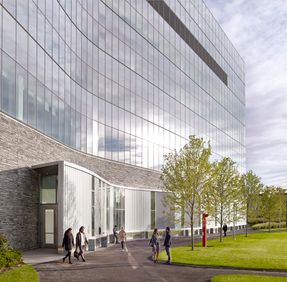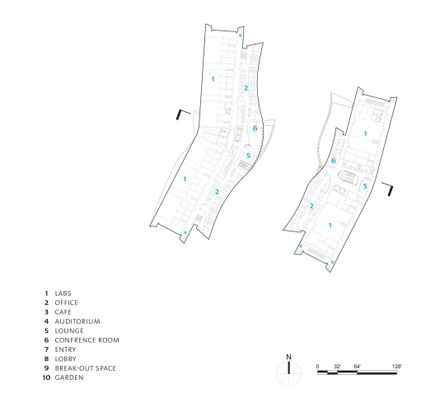
CUNY Advanced Science Research Center
ARCHITECTS
KPF , Flad Architects
JOB CAPTAIN KPF
John Oliver, Aia
LAB PROGRAMMING
Jacobs Consultancy, Inc.
DESIGN PRINCIPAL
William Pedersen, Faia
MANUFACTURERS
Bendheim, Construction Specialties
DESIGN ARCHITECT
KPF
MANAGING PRINCIPALS
Jill Lerner, Faia, Michael Greene, Aia
CONSTRUCTION MANAGER
Skanska Usa
PROJECT MANAGERS
Phillip White, Aia
ENGINEERS (STRUCTURAL, CIVIL, MECHANICAL, ETC )
Structural: Leslie E. Robertson Associates / Civil: Langan Engineers / Mechanical: Cosentini Associates, Affiliated Engineers, Inc. / Geo-technical: Mueser Rutledge Consulting Engineers
INTERIOR DESIGNER
Kpf (Public Spaces), Flad Architects (Lab & Office Spaces)
SENIOR DESIGNER
Hana Kassem, Aia
PHOTOGRAPHS
Jeremy Bittermann , Tim Griffith , Steve Hall/hedrich Blessing
TOTAL CONSTRUCTION COST
$617,123,000
TOTAL PROJECT COST
$708,000,000
AREA
399460 M²
YEAR
2014
LOCATION
New York, United States
CATAGORY
Laboratory, Research Center, University
Text description provided by architect.
The keystone of CUNY’S “Decade of the Sciences” initiative, KPF’s new science campus positions the school as a world-class research institution and provides state-of-the-art facilities befitting a truly modern university.
The Advanced Science and Research Center and the City College Center for Discovery and Innovation offer a positive presence for the Harlem community and serve as a magnet for nationally and internationally recognized researchers.
The influx of talent drawn to the new facility will allow CUNY to maintain its status as a premiere public university, and one which has historically sought to give back to city with over three quarters of its students remaining after graduation.
The complex is designed to accommodate a wide range of research initiatives in many varied disciplines, through the use of a modular utility “infrastructure” that can support varied research requirements.
Below grade, the buildings share services including a vivarium, a receiving area, building support activities, and core facilities such as Imaging Modalities, behavioral studies and cryo-physics.
The ASRC building, housing science facilities, is arranged thematically on a floor-by-floor basis focusing on five areas of research: Photonics; Structural Biology; Biosensing/Remote Sensing; Nanotechnology; and Neuroscience.
It acts as a CUNY-wide facility providing hoteling for outside research activities.
In contrast, the City College Center for Discovery and Innovation houses multiple disciplines on each floor, allowing for work on joint topics and projects. Both buildings promote active collaboration for researchers, faculty and students.



































